#she’s a hero
Text

a literal queen and the love of my life??
#dndads#uquiz#this had me GRINNING#I adore samantha stampler#she’s a hero#dungeons and daddies#uquiz results
34 notes
·
View notes
Text
I recently posted a defense of Snow White after all the live action controversy, and I haven’t been able to stop thinking about the other Disney Princesses that face similar pop-feminist treat. As such, here is my defense for my childhood favorite, Cinderella. Ps sorry for the long post, but she’s my favorite. Also, TRIGGER WARNING - I put the domestic abuse items at the bottoms as number 7, but it referenced throughout.
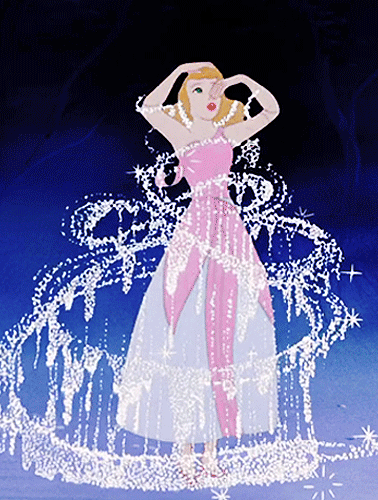
1. Timeless and Universal Story
For those of you who are unaware, Cinderella is not only iconic as a Disney princess, but a version of her story exists in most parts of the world. In Egypt, you have the story of a Rhodopis (written between 64 BC and 24 AD). In China, there is the story of Ye Xian which dates back to 860 CE. The Malay-Indonesian people have the tale of Bawang Putih Bawang Merah (the swing version). The Vietnamese have Tam Cam. The Algonquin Indians of North America have "The Rough-Face Girl." In Germany, the Grimm brothers published "Aschenputtel" in 1812. The English have “Tattercoats”. The Russians have Vasilisa the Brave, or Beautiful, or Wise, or Fair… she is too popular for a single name. In Italy, there is Basile’s Cenerentola (published 1964). There is the French Cendrillon by Perrault (published 1967) (this is the one that the Disney version is based on). And in America, the iconic retelling is Disney’s version from 1950.
I’m sure there are more retellings by different countries. These are just the ones I remember and could quickly find. These are also limited to (i) the most known versions for each area, (ii) female protagonists, and (iii) instances where the happy ever after includes marriage to a man of wealth and standing. There are many others versions which do not include these points. After all, the base Cinderella story arc is simple: (i) protagonist in a good position that reflects a culture’s values; (ii) protagonist falls due to an injustice and loses one or several of the the following: family, wealth, status, looks, etc.; (iii) despite the fall, the protagonist keeps the values appreciated by the culture; (iv) an outside source comes to the protagonist’s aid and provides advise or items; and (v) thanks to the combination of protagonist’s values and the advise/items, the protagonist lives happily ever after in a secure position that is equal or better than where they started. When dealing with the classic Cinderella, the fall should occur in the domestic sphere with a personal transformation occurring after the fall, and security is reached when a female protagonist can leave the abusive environment permanently. Because this is a defense of Disney’s Cinderella in particular, I’m going to focus on that Film in an American context.
2. Femininity as a Neutral
While pop feminist like to point out that Cinderella is shown doing primarily domestic (aka historically feminine) work, needs a pair of heels to change her life and is saved by a prince, they never dive deeper into their arguments. At the end of the day, traditional femininity is a mixed bag in this film.
A. Domestic Labor
Yes, Cindy is shown doing domestic labor. However, that domestic labor is shown in a negative light. She’s is in rags, worn out, and trapped. Domestic labor is not painted as something good. It is part of the representation of the abuse she suffers. The most artistic image of this labor occurs while Cinderella sings with the soap bubbles. That song is immediately followed up by the cat Lucifer destroying her work. Showing the endless and thankless nature of domestic labor.
B. Makeover
The heels are magic and part of her transformation. They are shown as “good” because of what they give her (i.e. the ability to go to the ball and the ability to prove her identity). Her makeover does not occur in a vacuum. We see Cinderella admire her own reflection in the movie multiple times (while in rags and transformed). We see her fawn over her mother’s dress and enjoy feminine things. She is not forced to give up her identity conform to the femininity those around her want her to have. She is given an opportunity to be herself. She is the girl who like ballgowns. She is the girl who enjoys shoes. The clothing is her expression. Not her cage. If Cinderella did not like such things, her fairy godmother would not have forced her to wear them. Forced femininity is wrong. So is hating on femininity for existing. And hating those (of any gender) that enjoy it.
C. Prince as a Symbol
Yes Disney’s Cinderella’s happy ending comes with a man, but he is not the point of the ending. If you ever noticed how underdeveloped the prince is, you are not alone. Because the prince is a symbol of Cinderella’s dream rather than a well rounded character.
In the movie, the ball is set up last minute. From the moment of the king’s decision to host the ball to Cinderella’s midnight run, not even 24 hours have passed. If Cinderella had been only been dreaming of a ball and prince for the entire film, how could she be singing about that particular dream in the beginning of the movie. The ball has not even been planned. She can’t have. Her dreams referenced in “A Dream is a Wish Your Heart Makes” must then be about something else. Looking at the context of the story, we know it takes place in a capitalist, patriarchal, hierarchical society based loosely off 1800’s France. In a capitalist country, financial security comes from riches (like in the royal treasury). Hierarchical status come from high standing (like royalty). Female success in a patriarchy often equates to marriage. Cinderella was only taken care of and protected while someone who loved her was alive (her father). She knows the mere fact a person has a duty to take care of and protect her (the stepmother) is not enough. As such, Cindy would find love, not a contract marriage, more secure. At the ball, Cinderella does not even realize it’s the prince she dances the night away with. She learns after the fact.
And what is her happily ever after? A prince who loves her, marries her, raises her social standing, and provides financial security. He is the embodiment of love and safety in the society of the story. Is it wrong to dream about love and safety when your life is miserable due to the lack of both? Heck, I’m not in her situation, and I still dream of love and security.
D. The Stepsisters
Like Cinderella, her stepfamily enjoys beautiful things and fashion. They want financial security. They embrace femininity as much as Cinderella. But are despised for their attitude and actions. Cruelty, vanity, greed and jealousy. They push Cinderella down so they can appear higher than her. The toxic nature of these characters shows that femininity is not idealized on its own. It must be combined with other positive traits. Bows and ruffles do not make one a worthy person. Ballgowns and heels alone do not earn a happy ending.
Perhaps their failings are in the unfeminine sins of being loud and ugly, but other versions of these stepsisters (including the French versions) are described as beautiful and poised. They are still the antagonists. Perhaps it’s their vanity, but we spy Cinderella enjoying her looks on multiple reflective surfaces throughout the movie (bubbles, a fountain, a pond and a mirror). Cinderella cries as loudly as the sister sing off key. Despite the Disney Marketing Team using the term “Ugly Stepsisters,” the story focuses on the sister’s actions (like ripping up the pink dress violently) as much as anything else. Their cruelty is better remembered than the shape of their noses. It’s their souls that are ugly. And no amount femininity will change that.
E. Masculinity is also Neutral
While masculinity is not very present in this movie, it does appear in side or undeveloped characters. The unhinged king who acts rashly, violently and loudly (negative). The nervous duke who needs a vacation and seems on edge (neutral - but less traditionally masculine ). The underdeveloped prince (positive) . The nefarious cat Lucifer (negative). And the helpful mice - particularly GusGus (positive, but ignorant) and Jacque (positive, but condescending) . Marrying a man might have given Cinderella her opportunity to flee an abusive household , but the stronger masculine moments of the film (like the king with his anger and the midnight chase) are not seen as particularly positive. With such a mixed bag of representation, you cannot say masculinity is treated in a more positive light than femininity.
In fact, even adherence to gender expectations is varied. The king is the character obsessed with babies. That typical feminine trait is his redeeming quality. The evil stepmother is commanding. Her presence on screen is filled with power. The Duke is physically weaker and emotionally intelligent. The Prince is obsessed with “love” but not women in general. None of the men are ambitious with the potential marriage. The most adhered to gender convention is clothing. Something that this particular fairytale says can easily be transformed to match your true identity with a wave of a wand.
3. Capitalism and Media
Every piece of media contains parts of the society that made it. Cinderella is no different. You can see the Dior New Look as an animated fashion masterpiece, the glitter of postwar consumerism and influence of post-war propaganda. In 1950, the dream was to throw off the toil and dirt of the war years and drive in your Chevrolet Bel Air into a future of modern conveniences and beauty.
Some people have complained that Cinderella is too capitalistic - with her new magic clothing celebrating consumerist culture and with wealth being a part of her happy ending. Well, Cinderella was made in America post-WWII during the Cold War. Pro-capitalist sentiment was the name of the game.
Plus, many older and more recent versions continue this capitalist view because we still live within capitalist societies. They are merely reflecting the values of society back at the audience. There are Cinderella tales where the wealth is refused (1997 animated Anastasia for example).
Additionally, even in the Disney version, Cinderella must return to rags before she can achieve happiness. While in these rags, we see her happily daydream about the night before and hum to herself contently while getting ready to meet the duke (who is trying the slipper on all women). This joy did not require her to change into a fancy gown. Or adorn jewelry. She is not embarrassed by her rags. Her mood only sours when the stepmother locks her in the attic. The loss of her escape makes her weep. It’s the lack of freedom, not finery, that breaks her. Even the last images of this film show Cinderella running happily in a fairly simple wedding dress down a flight of stairs with her prince and entering carriage that pulls away. The last image of Cinderella is not entering a castle, wearing golden gowns, covered in sparkling jewels, or any definitive measure of her new wealth. It’s her escaping. With the person who loves her. Running towards a life free of abuse and fear.
4. Everyone is a Princess
One Cinderella retelling said it better than I ever could. Per the Little Princess, “I am a princess. All girls are. Even if they live in tiny old attics. Even if they dress in rags, even if they aren’t pretty, or smart, or young. They’re still princesses. All of us.” Cinderella is not about a chosen one. A prophesied hero with special powers or abilities. It’s a story about a person being abused by those more powerful and overcoming that trauma. Anyone who was ever been made to feel like less than, can see hope in this timeless tale. I would expand this sentiment beyond girls to anyone who wants to be included because as Sarah reminds us being a princess is a state of mind. Anyone can do so if they are kind, remember they are worthy of love, and refuse to let others make them think their life has no value.
5. Bow down to the Princess that saved a Studio
Prior to the release of Cinderella, Walt Disney’s studio was facing imminent foreclosure. Disney owed the Bank of America millions of dollars.“Cinderella” proved to be the hit the Disney studio needed. Had it flopped, Walt Disney would likely have gone out of business; instead, it was a huge hit, and, in 1955, he opened Disneyland. Disney reportedly said the magical dress transformation sequence in Cinderella was his personal favorite piece of animation. Cinderella has remained visually recognizable and iconic over 70 years after her introduction. She is often used as the face of the “Disney Princess” marketed items. No doubt just the art of this movie changed the pop culture landscape forever. Without Cinderella, there is no Disney World, Little Mermaid, Mulan, Marvel Studios (as we know it), Owl House, Mary Poppins, Parent Trap, Beauty and the Beast, Pirates of the Caribbean, Lion King, Mighty Ducks, Remember the Titans, Holes, Inside Out, Encanto, Coco, Princess Diaries, Hocus Pocus, etc.
6. Personal Bias
I will own up to my own bias. Cindy and Buffy (from Buffy the Vampire Slayer) were my two main fictional heroes. I love them. It should be noted also that I am blonde with lighter eyes so I strongly identified visually with Cinderella on screen. She is one of the reasons I so strongly support increased representation for the POC, LGBTQA+ community, disabled people, etc. I remember how much it meant to see someone who looked like myself on screen. I can’t imagine not wanting others to experience the same joy.
**Trigger Warning Domestic Abuse**
7. Classic Cinderella, a Domestic Abuse Survivor
A. Her Story is a Survival Story
A classic Cinderella character suffers from and escapes domestic abuse. Disney’s Cinderella is no different. She is a victim who overcomes her circumstances and becomes known as a role model, heroine, and royalty. The film narrator directly states, “… Cinderella was abused, humiliated, and finally forced to become a servant in her own house. And yet, through it all, Cinderella remained ever gentle and kind.” Her suffering does not limit her ability to find happiness and success. She wins. She escapes. The fact her success is in part due to her friends and support network is valuable. And at the end of the movie, Cinderella must run down the stairs herself to the get the Duke’s attention. She must take that last step to obtain freedom. That’s often the hardest step. And it was her choice and action.
There is nothing wrong asking for or receiving help. Cinderella’s worth is not diminished because she has friends. We should be encouraging domestic abuse victims to reach out and get help. It is an incredibly dangerous situation, and the victim’s life is most as risk at the moment of escape. Cindy relied on mice, a fairy godmother and royalty. If you are in that situation, pleas feel free to rely on a friend, family member, hotline, etc. Get yourself to a women’s shelter that can give you a roof, clothes and food. Cinderella received goods from her godmother. There is no shame in getting help.
Cinderella is not less valuable because she did not escape on her own. She just needed to escape. Happiness is only found outside of the abusive environment. This is the story of survival. Remaining gentle and kind despite the world. Not letting your trauma darken your heart. How can that not have value? Especially, when this is such a real world issue.
B. Blame Society and Abusers, not the Woman
In the context of a story which is loosely based on 1800’s France, we see no working women (other than Cindy as a servant). To leave without a reference (which the stepmother would never give) or a husband to provide, Cinderella would have ended up a prostitute. There were no domestic abuse shelters in the 1800’s. There were no ways to support or save herself within the world shown on screen without a “miracle”. If leaving a domestic abuse situation in our world is hard, dangerous and requires aid, Cindy required more. She required magic. Neither Cinderella nor any other domestic abuse victim should be blamed for the faults of their society.
We should also not fault Cinderella for being abused. I don’t understand how conveyers of pop-feminism can clearly explain the issues with victim-blaming in sexual situations, but then fail to grasp the exact same concept in popular narratives. Is it the animation as a method of storytelling? The fact the victims find happiness despite their trauma without always resorting to punishing the evildoers? The fact that these victims are hyperfeminine? As if looking a certain ways means you are asking to be hurt. How is this supposed to make real victims feel when they hear the cruel comments? When they identify with Cindy’s situation? Don’t blame the innocent party for failing to stop the actions of the abusers. Only the abuser is responsible.
C. Real World Issue and Inspiration
Much like Cinderella, we exist in a capitalist, patriarchal, and classist society. The USA struggles with domestic abuse and child abuse even today. On average, nearly 20 people per minute are physically abused by an intimate partner in the United States. During one year, this equates to more than 10 million women and men. 1 in 4 women and 1 in 9 men experience severe forms of domestic abuse (Domestic Abuse Statistics by the NCADV). In 2021, a reported 452,313 perpetrators abused or neglected a child. In substantiated child abuse cases, 77% of children were victimized by a parent. In 2022, 21% of people alleged to have abused a child were themselves children. (Child abuse statistics by the National Children’s Alliance).
The issue was even was worse in the past, which might explain why certain older versions of Cinderella still resonate. For the majority of western history, domestic abuse was explicitly legal. Maryland was the first state to make hitting your wife illegal in 1882. In North Carolina in 1886, the beatings had to be severe enough to cause permanent injury or malicious beyond reason to be punishable. Wife beating only became illegal in all of the United States in 1920. There were not serious legal changes between then and 1950 when Disney’s Cinderella was released. Domestic matters were seen as something private to handle at home. In 1962 (12 years after Cinderella’s release), Domestic violence cases were transferred from Criminal Court to Family Court in New York, making it nearly impossible for perpetrators to be criminalized if he or she assaulted someone. Also in 1962, the first guidelines for recognizing child abuse and neglect are printed. Maine opened one of the first women’s shelters in 1967. In Chicago during the 1970s, women’s who left their husbands due to battering were denied welfare because of their husband’s salary. The Child Abuse and Prevention Act only passed in 1974. Terms like emotional and physiological abuse were not used or recognized until right before the 1980s. Stalking wasn’t identified as a crime until the 1990’s. The Violence Against Women Act was not passed until 1994.
Given that Cinderella is a story where the victim, not only escapes, but thrives, it has merit. Because that the majority of domestic abuse victims are women, Cinderella’s gender and femininity seem all the more valuable. I know of at least one survivor who used this film for comfort while growing up. I hope she has stayed safe.
Cinderella is not defined by her pain or abuse. She is defined by her perseverance and good heart. She is defined by her escape from the abusive home. She is defined by finding love, security and acceptance. She is a valuable character who deserves to be iconic. I hope every survivor can see a little of themselves in her gentle kindness.
#cinderella#disney#disney cinderella#domestic abuse#defending my childhood movies#she’s a hero#long post#pop feminism counter#femininity#femininity in Cinderella#feminism
10 notes
·
View notes
Text

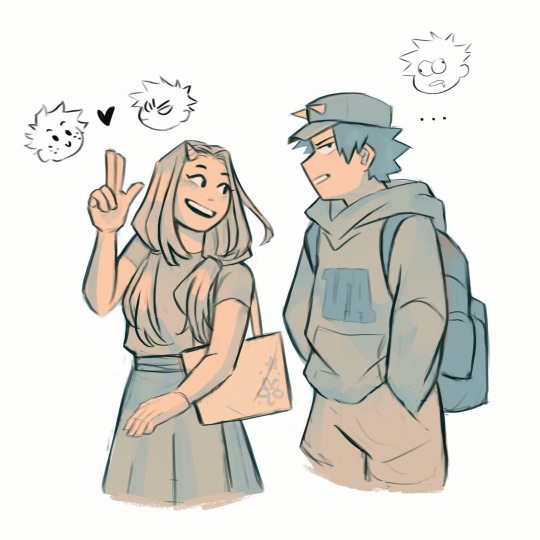
Anyways what kind of music do you think Eri listens to
#UGH I ADORE MY DAUGHTER#she’s my little rockstar living her best life >:(#all of class A and B as well as the big three have such a soft spot for her and would definitely show up to any music event she performs at#aizawa is a proud dad and can’t believe his little girl is all grown up :(#I also headcanon that Eri sings songs that hint to bkdk to GET IT TOGETHER because she loves her bigger brothers and wants them to be happy#Eri believes in love and Kota thinks Bakugou is a lame old geezer who won’t do anything about lmao#bnha#boku no hero academia#my hero academia#my art#mha#bnha fanart#boku no hero academia fanart#my hero academia fanart#eri fanart#eri#Kota and eri#Kota#mha 403#bkdk#bakudeku#eri chan#Kota Izumi
10K notes
·
View notes
Text
percy’s view of himself: i’m so stupid and ugly and useless. i’m such a lame demigod
literally everyone else’s view of percy:
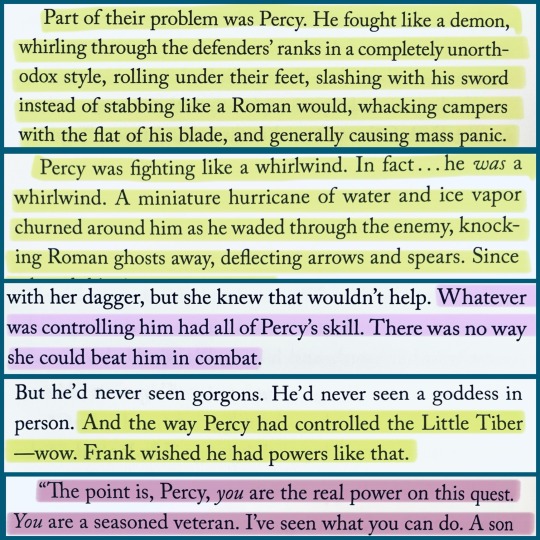

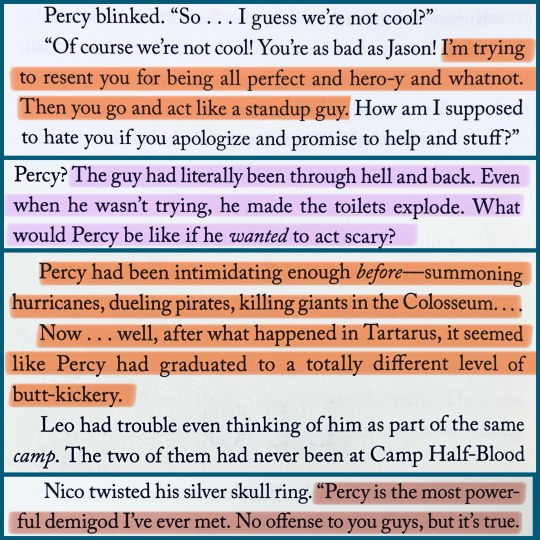
#percy is SO badass#the most powerful demigods alive are all in awe of him#if only he knew how other people saw him#and no i didn’t include annabeth quotes because she’s a teeny bit biased#STOP SAYING PERCY IS DUMB#percy jackson#leo valdez#piper mclean#frank zhang#hazel levesque#reyna ramirez arellano#nico di angelo#heroes of olympus#pjo#percabeth#percy jackson and the olympians
14K notes
·
View notes
Text
One thing which genuinely bothers me is Annabeth's perception in the fandom. How she's seen as this cold, stoic, emotionless, reserved and intimidating girl. When in reality, she's a character full of love.
Annabeth, who immediately cried and felt attached to Cerberus after playing with him for a few minutes because she wouldn't get to play with him again.
Annabeth, whose deepest desire, which the Sirens lured her with, is saving Luke and having a good relationship with both her parents.
Annabeth, who believed in Luke's goodness, even after all the countless terrible things he did simply because she had faith in his humanity.
Annabeth, who cried in Percy's arms before entering the labyrinth and refused to reveal the last line of the prophecy because it said to lose a love worse than death and the idea of losing any of her friends is too painful, heartbreaking and worse than dying.
Annabeth, who kissed Percy before parting with him in St. Helens because if he's going to die, she at least wants him to die knowing she loved him.
Annabeth, who took a poisoned knife for Percy during the war because she'd rather die herself than let him die.
Annabeth, who convinced Luke to switch sides by reminding him of the promise of family he gave her. Which in turn, influenced Luke's decision to end himself to destroy Kronos. Hello, she saved the world with the power of love.
Annabeth, who spent months after months losing sleep and searching desperately for Percy when he went missing.
Annabeth, who kissed Percy to eternity in public at their reunion, not caring what anyone is going to say or think. An asteroid could've hit the earth, and she wouldn't have cared.
Annabeth, who told Percy “I love you” when falling in Tartarus because if she was going to die, she wanted them to be her last words.
Annabeth Chase is a sweetheart, who has always felt things deeply and she's so full of love. And I think it's time we let go of the “cold-hearted annabeth” headcanon because it's not true, that's not her.
#LISTEN#MY GIRL IS A SOFTIE AT HEART OKAY#her ‘cold exterior’ is just a facade she puts up to guard herself bc of everything she went through#percy jackson#pjo#pjo live adaptation#percy jackson and the olympians#hoo#heroes of olympus#mark of athena#house of hades#pjotv#pjo disney+#annabeth chase#percabeth
12K notes
·
View notes
Text






I love The Sapphic Pose ™️
#bubbline#korrasami#harlivy#lumity#catradora#marceline x bubblegum#korra x asami#harley quinn x poison ivy#luz x amity#catra x adora#adventure time#the legend of korra#tlok#harley quinn#the owl house#toh#she ra and the princesses of power#sapphic#lgbtq#bisexual#lesbian#ok ko enid#enid x red action#rednid#red action#ok ko let's be heroes#I just edited this because I forgot Enid and red action
7K notes
·
View notes
Text
I never fully realised how heartbreaking this "I choose the prophecy" thing is. Imagine you are Annabeth. Imagine you are fourteen and the boy you have a crush on since over a year just broke literally any rule, travelled across the whole country and held the dam sky to save you, and you hear him say: "I'm gonna die in two years, because otherwise this poor little boy would have to carry the burden of the prophecy and I can't let this happen."
Edit: I feel like y'all still aren't sobbing enough, so I'd also like to remind you that six months later, Annabeth goes into the labyrinth and gets the prophecy "and your love will face a fate worse than death".
#the titans curse#pjo#percy jackson and the olympians#percy jackson#annabeth chase#percabeth#nico di angelo#like she didn't know that while Percy is “a half-blood” that doesn't make him “the hero”
9K notes
·
View notes
Text
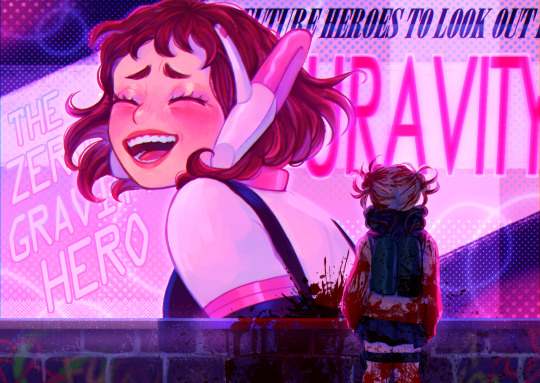
it's never over, she's the tear that hangs inside my soul forever
inspo credits to "Veil" by @/_K0TTERl_
ochako ver
#omggg she's finally done#literally my favorite ochako I've ever drawn#love these two forever and ever and ev#pour one out for jeff buckley#bnha#togachako#mha#bnha fanart#toga himiko#my hero academia#toga#togaraka#uraraka ochako#himiko toga#ochako uraraka#my artwork
11K notes
·
View notes
Text

Thinking about how this implies that izuku talks about katsuki when he’s with her
#He most definitely does tho lol#It's either that or she saw him fight AFO & thought that was his actual name when he said#I can see it from Eri asking who inspired Deku to be the hero who saved her#his response is to gush and info dump#anime#mha#bnha#my hero academia#boku no hero academia#mha eri#aizawa shouta#bkdk#bakugou katsuki
3K notes
·
View notes
Text
I love how Percy is genuinely like wtf when Luke says Annabeth - who’s twelve - is head counsellor so he’s under the impression that annabeth is ridiculously powerful when in reality her older cabin mates just wanted to spend their time coming up with ways to hack the government instead of assigning cabin chores
#obviously annabeth is powerful#but like#she’s twelve#it’s funny#pjo#percy jackson#heroes of olympus#pjo funny#annabeth chase#pjo headcanons#percabeth#jason grace#piper mclean#sally jackson#luke castellon#pjo tv show#pjo disney plus#pjo disney spoilers#just in case#pjo disney#luke castellen
17K notes
·
View notes
Text
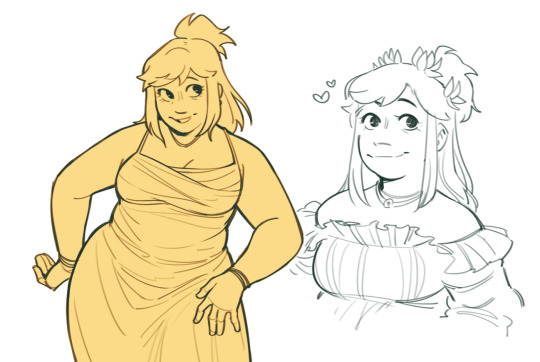
inko <3
refs
#bnha#mha#inko midoriya#my hero academia#habs art#doodles#replacing hisashi and treating inko the way she deserves#I take izuku out to play catch and to The Game too cause I’m not just a step dad I’m the dad that stepped up
5K notes
·
View notes
Text



Oh that's where he went
#i knew those voids looked familiar *WHEEZE*#linked universe#lu hyrule#lu legend#lu four#lu time#lu twilight#lu wind#lu sky#lu warriors#lu wild#my art#no but actually id love for this ZELDA to join the chain because she's the hero of this game#but i saw link disappear into the void and the FIRST thing i thought of were the lu portals and this comic manifested#and i just had to draw it#SO THAT'S MY EXCUSE
5K notes
·
View notes
Text

#when you stabbed her but now she lets you sit on her lap in class#this is OUR hero academia.#togachako#himichako#toga#ochako#mha#bnha
4K notes
·
View notes
Text
it seems that the entire percy jackson fandom is in agreement
out of all pjo/HoO characters…
who’s the most powerful: percy
who’s the most brutal: percy
who’s the most unhinged: percy
who has the greatest capacity for evil: percy
who’s the scariest: annabeth
#she’s just scary ok??#even apollo calls her the scary one#THATS saying something#annabeth chase#percy jackson#heroes of olympus#percy jackson and the olympians#percabeth#pjo
12K notes
·
View notes
Text
My favorite thing about Annabeth is her wardrobe.
Cause like, Rick simplifies her clothes in a way a man would, and you can tell.
Cause in EVERY book, from The Lightning Thief to Chalice, she’s in the goddamn CHB shirt. With like some shorts or cargo pants. Nothing more, nothing less.
He’s made improvements over the years, giving her some other clothes. But he’ll always come back to old faithful.
Like, he most definitely did it on accident, but he made her so Adam Sandler and I love it
#and she def walks around in basketball shorts and a wife beater#+ the fact that she probably steals Percy’s clothes#like don’t get me wrong she looks awesome#I just think it’s funny#and with Rick’s books you can tell by the fashion that it’s a man writing#AND SHES THE ONLY ONE#besides Jason#Jason also only wears his purple t-shirt#I’m pretty sure he died in it#but everyone else has a sense of fashion#even if it’s a little bit#I love her#she’s so Adam Sandler coded#percy jackon and the olympians#pjo series#pjo hoo toa#pjo tv show#heroes of olympus#pjo#percy jackson#annabeth chase
4K notes
·
View notes
Text
Percy, in the middle of battle: goddess, save us all.
Someone: don't you mean gods?
Percy: nope. Most of them are unreliable. I only pray to Hestia, and when I asked she said that she preferred she/her pronouns.
#pjo fandom#percy pjo#annabeth chase#percy jackson#camp half blood#piper mclean#percybeth#heros of olympus#hestia#greek gods#goddess#godess#gods#goddesses#grover pjo#grover underwood#Battles#percy series#percy and annabeth#percabeth#pronouns#she/her#he/him
6K notes
·
View notes